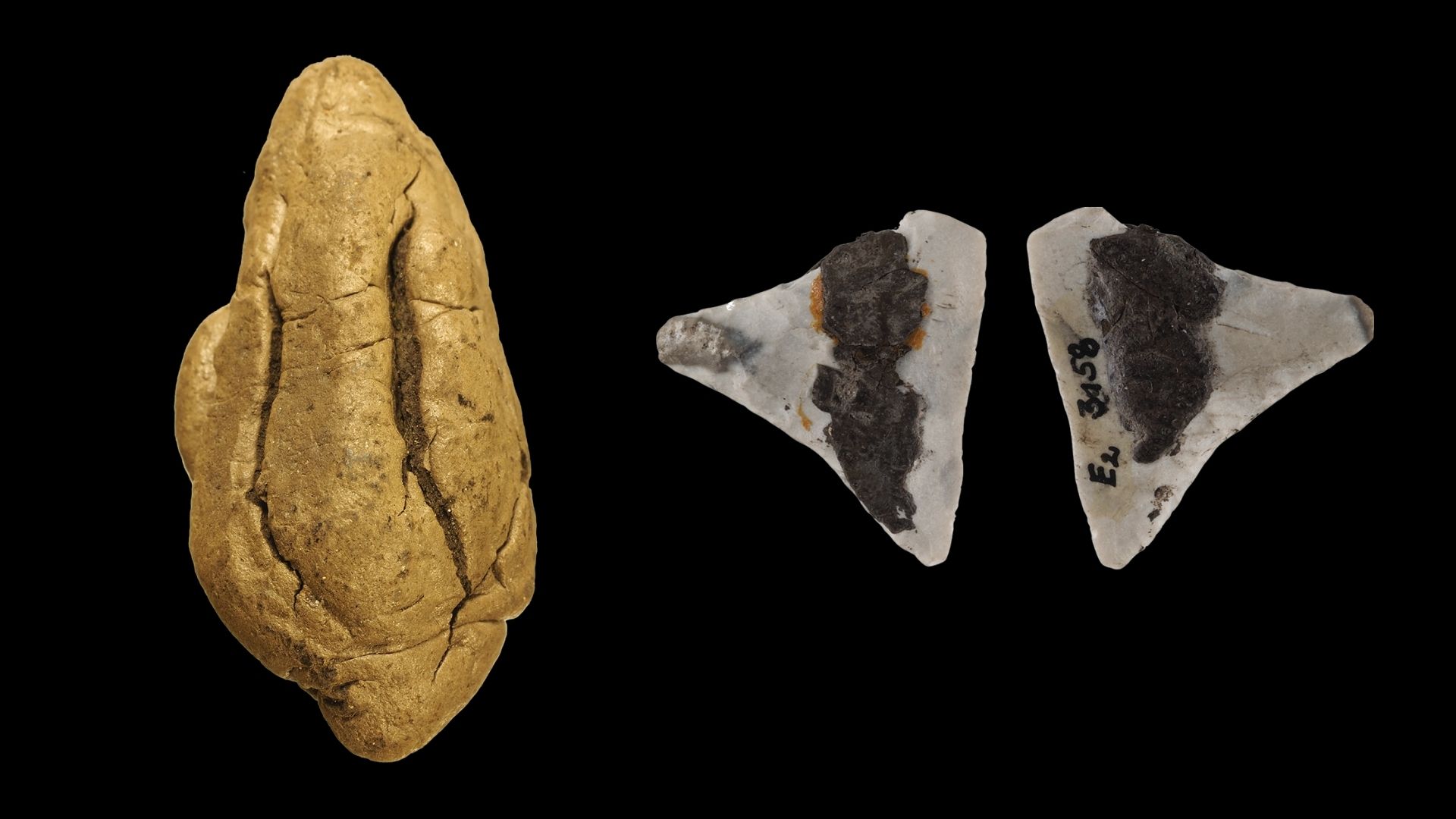Science
Ancient Chewing Gum Unveils Gender Roles in Neolithic Europe

A recent study conducted by researchers from the University of Copenhagen has shed light on gender roles in Neolithic Europe, revealing insights from ancient “chewing gum” dating back over 6,000 years. The research involved the analysis of discarded birch tar wads, which were likely used by Neolithic communities as a form of chewing gum.
The study, led by archaeologist Anna White, examined 30 pieces of birch tar retrieved from nine sites in the European Alps. Many of these artifacts were found in lake settlements, where the tar had preserved organic material remarkably well. The researchers noted that the reasons behind the chewing of birch tar remain unclear, although it is believed to have medicinal properties due to its natural antimicrobial compounds.
In their investigation, the team focused on identifying the daily activities of men and women during this period. As they analyzed the birch tar, they discovered traces of human saliva, food particles, and DNA from various plants. Among the significant findings were traces of linseed and poppy seeds, although the latter’s role—whether as food or for its psychoactive effects—remains uncertain.
Uncovering Gendered Practices
The researchers extracted DNA from 19 samples, which allowed them to draw conclusions about the gender of individuals who chewed the tar. Their findings indicate that male DNA was present in tar used as adhesive for ten stone tools, while female DNA was linked to tar used in the creation of three pottery items. This suggests a division of labor, with men primarily engaged in tasks involving stone tools and women focused on pottery production.
The research also posed an intriguing hypothesis: Neolithic people may have chewed the tar to soften it, as it hardens upon cooling. However, the saliva introduced during chewing can diminish the adhesive properties of the tar, which can only be restored through reheating. The researchers noted, “This may explain why we find less oral microbial DNA in the hafted samples and the ceramic tars than in some of the ‘chewed’ pieces.”
Insights from Ancient Artifacts
This groundbreaking research offers a rare glimpse into a time when human remains are scarce, making the analysis of ancient chewing gum a valuable tool for understanding prehistory. The study highlights how such artifacts can provide critical insights into the social structures and daily lives of early humans.
The findings have been published in the Proceedings of the Royal Society B, showcasing the importance of interdisciplinary approaches in archaeology. As researchers continue to analyze these ancient materials, they can uncover details about the diets, health, and social practices of Neolithic communities that would otherwise remain hidden in the sands of time.
The implications of this research extend beyond simple historical curiosity; they challenge and enrich our understanding of gender roles and daily life in ancient societies. As more studies like this emerge, they pave the way for a deeper appreciation of our shared human heritage.
-

 Business4 days ago
Business4 days agoInvestors Eye Potential $60,000 Gains with Ozak AI Token
-

 Politics5 days ago
Politics5 days agoFormer Pastor Arrested on Human Trafficking and Indecent Charges
-

 Business5 days ago
Business5 days agoQuotient Wealth Partners Adjusts Holdings in iShares Russell 1000 ETF
-

 Lifestyle5 days ago
Lifestyle5 days agoNatty from KISS OF LIFE Stuns in Micro-Shorts at Seoul Event
-

 Politics4 days ago
Politics4 days agoSkip Bayless Critiques Travis Hunter’s Game Day Baptism
-

 Entertainment5 days ago
Entertainment5 days agoUtah Residents Face Resource Shortages Amid Ongoing Government Shutdown
-

 Business5 days ago
Business5 days agoCalifornia to Ban All Plastic Bags in Grocery Stores by 2026
-

 Entertainment5 days ago
Entertainment5 days agoPete Davidson Surprises Pregnant Girlfriend with Private Jet to Concert
-

 Entertainment5 days ago
Entertainment5 days agoAce Frehley, KISS Guitarist, Passes Away at 74 After Fall
-

 Science5 days ago
Science5 days agoCommunity Mourns Loss of Judith Ernst, Pioneer Educator at 81
-

 Politics5 days ago
Politics5 days agoIberia Parish Sees Surge in Marriage Licenses Issued in October
-

 Science5 days ago
Science5 days agoMIT Develops Groundbreaking 3D Brain Models for Personalized Therapies









